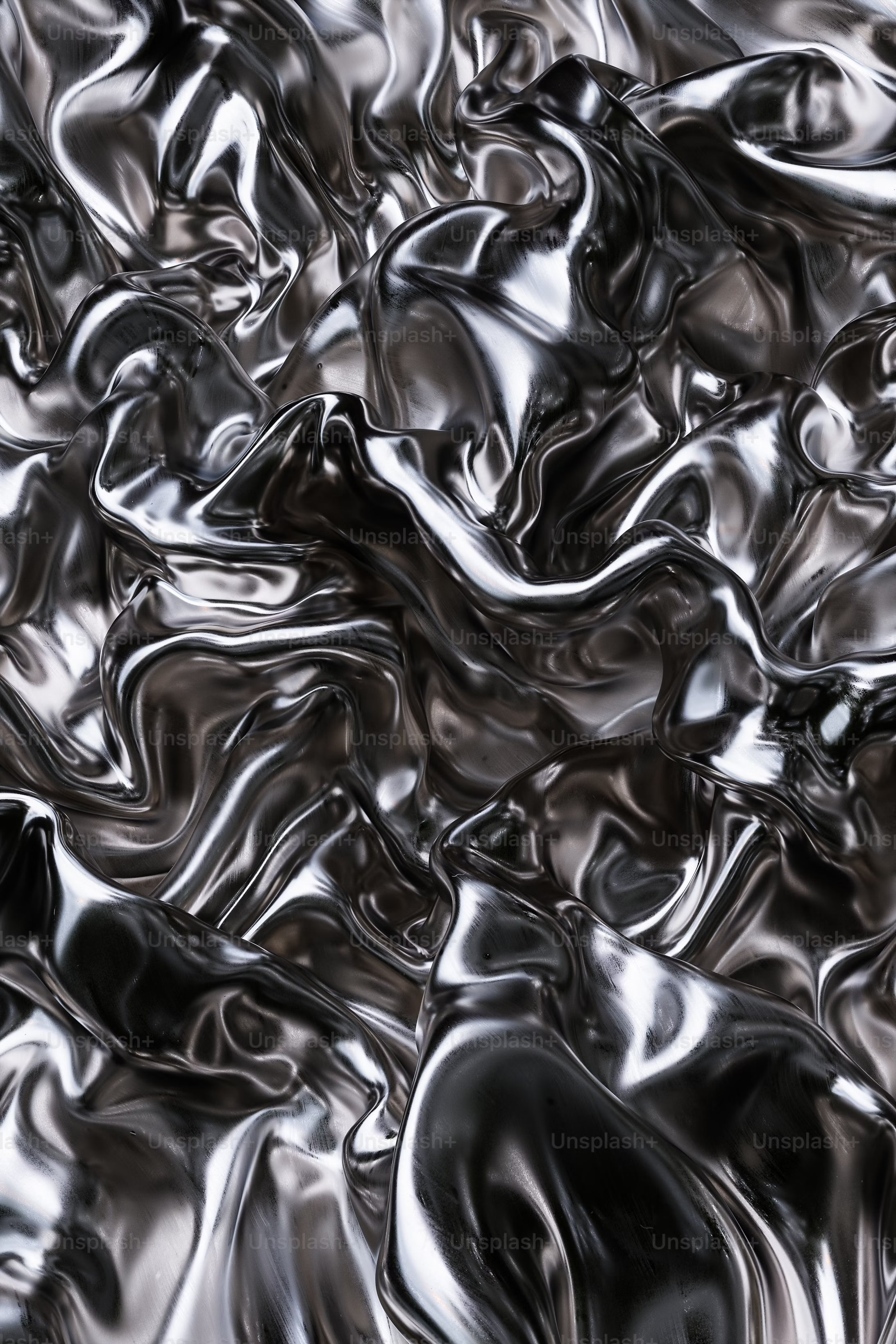
Tallow-Based vs. Traditional Moisturizers
In the quest for healthy, hydrated skin, a new trend has emerged: tallow-based skincare moisturizers. These natural, animal-fat-based balms are touted as nutrient-rich alternatives to conventional lotions found on drugstore shelves. But how do they really compare to traditional moisturizers? Below, we break down the key differences in ingredients, benefits, absorption, and overall impact on skin health – and examine the potential risks associated with the synthetic ingredients often found in conventional products.
Ingredients: Natural Fats vs. Synthetic Components
Tallow Moisturizers: Tallow-based creams and balms use rendered animal fat (usually beef tallow) as the primary ingredient, often supplemented with minimal, natural additives. Tallow is rich in lipids (fats) that closely resemble the oils our skin produces. It naturally contains beneficial fatty acids, as well as essential vitamins A, D, E, and K (source). This means a typical tallow balm might be made of just beef tallow (sometimes grass-fed for extra nutrient content) and perhaps a few natural enhancers like beeswax (for texture) or herbal infusions for scent. The ingredient list is short, recognizable, and free of artificial chemicals.
Traditional Moisturizers: Conventional lotions and creams often have water as the first ingredient, combined with a mix of humectants, emollients, and occlusives. For example, a standard drugstore moisturizer might include ingredients like:
Water (to deliver hydration),
Glycerin or hyaluronic acid (humectants that draw moisture into the skin),
Mineral oil or petrolatum (occlusive agents derived from petroleum that lock in moisture),
Emulsifiers (like glyceryl stearate or PEG compounds to blend oil and water),
Preservatives (such as parabens or phenoxyethanol to prevent microbial growth),
Fragrance (synthetic scent compounds), and more.
In short, traditional moisturizers rely on a complex cocktail of synthetic and chemical ingredients to achieve stability, texture, and shelf life. This formula effectively hydrates the skin but often contains additives that serve no nutritive function for your skin (for instance, perfumes or colorants are there for user experience, not skin health). By contrast, a tallow balm’s ingredients are all active in nourishing or protecting the skin, with no fillers.
Benefits and Nutrient Profile
Tallow’s Nutritional Boost: One of the standout differences is the nutrient profile of tallow. Because it is an animal fat, tallow naturally carries fat-soluble vitamins and beneficial fatty acids that can feed and protect the skin. For example, the fatty acids in tallow help support the skin’s protective barrier and maintain moisture. Dermatologists note that beef tallow is “naturally rich in fatty acids, including oleic, palmitic, stearic, and linoleic acid,” which our skin needs to stay healthy. These lipids reinforce the skin barrier, preventing excessive moisture loss and leading to smoother, more supple skin (source). Additionally, the presence of vitamins like A, D, and E in tallow can contribute antioxidant benefits and support skin renewal. Essentially, tallow acts like a whole-food supplement for your skin, delivering a broad spectrum of nutrients in each application.
Traditional Moisturizer Benefits: Traditional moisturizers, on the other hand, are formulated primarily to hydrate and soften. The combination of humectants (to draw in water) and occlusive agents (to seal it in) can be very effective at reducing dryness and healing a compromised skin barrier. In fact, many conventional products do a great job of providing immediate relief to dry skin. For example, petrolatum (petroleum jelly) is known to be one of the most effective occlusives to prevent water loss, and glycerin is a powerful hydrator used in countless creams. Some advanced formulations also add vitamins or antioxidants, but these are often lab-derived (like synthetic vitamin E) and in lower concentrations.
The key difference is that while traditional lotions moisturize, they usually lack the natural array of skin-friendly nutrients found in tallow. Tallow’s unique benefit is that it moisturizes and nourishes, whereas a typical lotion moisturizes without offering additional nourishment. Over time, this could mean tallow-based products not only hydrate the skin but also support its health with vitamins and fatty acids that skin cells can utilize.
Effectiveness and Absorption
Moisturizing Power: Both tallow balms and conventional moisturizers aim to combat dryness, but tallow may have an edge in long-term moisturizing capability. A scientific review of tallow in skincare noted that in one study, pure tallow provided greater moisturizing impact on the skin than emulsified creams with extra additives (source).
In practical terms, users of tallow-based balms often report that a little goes a long way – a single application can keep skin supple for many hours. Tallow’s heavy, balm-like texture forms a protective layer, yet it’s not merely sitting on top of the skin. It actively penetrates and conditions. In cases of chronic dryness or conditions like eczema, tallow’s efficacy is especially compelling: there are studies suggesting tallow-based moisturizers can soothe dermatitis and even psoriasis symptoms.
In a small clinical study, people with eczema/psoriasis who applied a beef tallow-based emulsion reported significant improvement in their skin condition (source). This therapeutic effect is likely due to tallow’s intense moisturization and its ability to bolster the skin barrier (these skin conditions are often linked to a weak barrier and lipid deficiency).
Absorption and Skin Feel: One surprising aspect of tallow-based moisturizers is how well they absorb despite their rich consistency. Because tallow so closely resembles human skin oils (sebum), the skin “recognizes” it and readily lets it in. Tallow’s lipids mirror the lipids in our outer skin layer, which can translate to better absorption and less irritation for many people.
Once warmed upon contact with skin, tallow softens and spreads easily, absorbing into the top layers of the epidermis. Many users find that high-quality tallow balms (especially whipped ones) soak in after a few minutes and don’t leave a heavy greasy residue. By closely mimicking the skin’s natural oil composition, tallow can moisturize deeply without “overwhelming” the skin.
Traditional lotions often have a lighter feel initially – they may absorb quickly due to their water content, giving an immediate sense of hydration. However, that water eventually evaporates. What’s left are the occlusive ingredients that sit on the surface to prevent moisture loss. For instance, a lotion with mineral oil will leave a light film that traps hydration, and silicones in face moisturizers can give an instant silky finish. These products are designed for quick application and a non-greasy afterfeel, which is a plus for daytime use. The trade-off is that the hydration from a traditional moisturizer may not last as long unless re-applied, especially in very dry conditions, because water-based products can evaporate or rub off. In contrast, tallow’s fatty layer integrates with the skin oils, maintaining moisture balance for longer stretches.
Skin Compatibility: In terms of compatibility, tallow’s natural profile tends to be gentle on most skin types. It’s non-comedogenic for the majority of people (meaning it typically doesn’t clog pores), and its lack of synthetic irritants makes it suitable for sensitive skin. Of course, every individual is different – someone with very oily, acne-prone skin should always patch test a rich product like tallow to ensure it doesn’t trigger breakouts. But generally, the skin tolerates pure tallow well, since it doesn’t contain common irritants found in many commercial products. Meanwhile, traditional moisturizers vary widely in compatibility. Many are formulated to be non-comedogenic and hypoallergenic too, but if you pick one with heavy fillers or fragrances, sensitive or acne-prone skin might react. It’s not unusual for people to find that switching from a complex lotion to a simple tallow balm results in calmer, happier skin with fewer redness or irritation issues – largely due to the omission of unnecessary chemicals.
Impact on Skin Health
Tallow and Skin Health: The long-term impact of using a tallow-based moisturizer can be very positive for skin health. By feeding the skin a natural source of lipids and vitamins every day, you’re essentially strengthening the skin’s own defenses. The fatty acids in tallow help replenish the lipid matrix in the stratum corneum (outer skin layer), which is crucial for maintaining a strong barrier. A well-nourished barrier means better protection against environmental irritants, less transepidermal water loss, and more resilient skin. Over time, users often notice improvements like reduced flakiness, improved texture, and relief from conditions like chronic dryness or eczema.
Tallow’s nutrients (like vitamin E and antioxidants) can also combat oxidative stress in the skin, potentially slowing signs of aging or damage. Moreover, tallow has a longstanding history in traditional medicine for wound healing and skin repair – for example, tallow-based balms have mild antimicrobial properties and have been used on minor scrapes or irritations with good results (source). While more scientific research is ongoing, early studies and abundant anecdotal evidence suggest that tallow not only moisturizes but actively supports healthier skin function.
Traditional Moisturizers and Skin Health: Traditional moisturizers primarily ensure that skin doesn’t dry out, which is indeed a fundamental aspect of skin health. Keeping skin hydrated helps maintain elasticity, prevents cracking, and supports the skin’s role as a protective barrier. Many dermatologists recommend daily use of moisturizers (including conventional ones) to manage conditions like eczema or simply to counteract drying environmental effects.
However, the impact of added synthetic ingredients in these products can be a mixed bag. On one hand, if a lotion includes beneficial actives (like niacinamide, ceramides, or urea), it can actively improve skin condition beyond basic hydration – some conventional products are fortified with such actives and can improve skin smoothness, tone, and barrier function. On the other hand, frequent exposure to certain chemicals in skincare might have undesired effects for some people. For instance, artificial fragrances in a moisturizer don’t improve skin health – they’re there to smell nice, but for a significant number of users they can cause redness or allergic reactions over time. If a person has very robust skin, a standard lotion with some synthetic components may pose no issue at all; their skin stays moisturized and that’s that.
But for those with sensitive skin or those trying to minimize chemical exposure, the cumulative impact of applying a mixture of preservatives, fragrance, and other additives daily might include irritation, disrupted skin pH, or other subtle changes. In contrast, a tallow-based product delivers moisture in a way that’s aligned with the skin’s natural composition, potentially making it a more holistic choice for skin health.
Potential Risks of Synthetic Ingredients in Conventional Products
One of the driving motivations behind the shift to tallow-based and other “clean” skincare products is concern over potential risks associated with synthetic ingredients in traditional moisturizers. Here are a few common components in conventional skincare that have raised questions:
Parabens (Preservatives): Parabens such as methylparaben and propylparaben are widely used in lotions to prevent mold and bacteria growth. In recent years, these chemicals have come under scrutiny for possible health effects. Scientific studies suggest that parabens can act as endocrine disruptors, meaning they may interfere with hormone function in the body. Notably, parabens have been detected in the urine of nearly all adult Americans examined in a large study (source), which indicates how readily these substances can be absorbed through skin and accumulate with regular use. While regulatory agencies maintain that parabens at the concentrations used in cosmetics are generally safe, consumers who prefer to err on the side of caution often opt for paraben-free products. Tallow balms typically require no preservatives (since they contain no water), allowing you to moisturize without exposing your body to parabens.
Phthalates (Fragrance and Texture Agents): Phthalates are another class of synthetic chemicals frequently found in skincare and cosmetics, often hidden under the term “fragrance” or used to improve product texture. Like parabens, certain phthalates are known to be endocrine disruptors and have been linked to developmental and reproductive issues in animal studies. Importantly, phthalates can enter your bloodstream through dermal absorption (source). Research has shown that using phthalate-containing personal care products (like lotions, perfumes, deodorants) leads to measurable levels of these chemicals in the body. This is concerning for those trying to reduce their body’s chemical load. By avoiding conventional products with mystery fragrances or plasticizers, you also avoid these compounds. Natural moisturizers like tallow balms are usually free of phthalates and synthetic perfumes, using maybe a touch of essential oil or just the mild natural scent of tallow itself, if anything.
Artificial Fragrance: That lovely smell in your cream might come at a cost. Fragrance mixtures are a top cause of allergic reactions on the skin. In fact, contact allergy to cosmetic fragrances is relatively common – studies in Europe and the US have found that about 1–3% of the general population will develop a fragrance-related allergy (source). These allergies can manifest as persistent redness, itchiness, or rash (a condition known as contact dermatitis). Fragrance formulas can contain dozens of chemicals (including phthalates as mentioned) and yet brands aren’t required to list them individually on labels. For sensitive individuals, a “fragrance-free” moisturizer is often the first recommendation dermatologists make. Tallow-based moisturizers are almost always free of artificial fragrance; at most they may be lightly scented with a natural vanilla bean or lavender if a scented version is offered. Many are completely unscented, which eliminates this entire category of risk. Your skin gets pure moisture without any dubious perfume chemicals.
Other Additives: Traditional lotions may include emulsifiers and penetration enhancers (like propylene glycol) which, while generally regarded as safe, can irritate some people’s skin or cause stinging on broken skin. Some products contain formaldehyde-releasing preservatives (e.g., DMDM hydantoin, imidazolidinyl urea) which slowly release small amounts of formaldehyde to kill germs – effective for preservation, but formaldehyde is a known skin sensitizer and allergen. There’s also the question of long-term exposure to combinations of these chemicals; individually they may be tested as safe, but less is known about their cumulative effect when layered in the dozens of products the average person uses daily. This uncertainty is a key reason the clean beauty movement advocates for simpler formulas. By using a tallow balm that might only contain one or two ingredients, you drastically reduce the number of chemical exposures, which is a prudent move for overall health.
Final Thoughts
Both tallow-based and traditional moisturizers ultimately aim to keep your skin soft, hydrated, and healthy – but they go about it in very different ways. Traditional lotions use modern chemistry to deliver quick hydration and a pleasant sensory experience, but they often rely on synthetic compounds that some users wish to avoid. Tallow-based moisturizers take a more ancestral, back-to-basics approach: using an ingredient from nature that nourishes and protects the skin in a way that’s remarkably compatible with our biology.
If you’re seeking a moisturizer that not only hydrates but also feeds your skin beneficial nutrients (all while steering clear of potential irritants or hormone-disruptors), a tallow-based balm could be worth a try. Many find that it transforms dry or troubled skin and provides lasting moisture that outperforms water-based lotions. On the other hand, if you have very oily or acne-prone skin, you may need to patch test and see if tallow works for you, as everyone’s skin chemistry is unique.
In making the choice, consider your personal values and skin needs. Are you looking to simplify your skincare routine with whole, natural ingredients? Do you have sensitivities that make you scrutinize ingredient lists? Or do you simply want the richest moisturizer you can find for your parched winter skin? Tallow-based and traditional moisturizers both have their place – it’s about finding which one aligns with your skin’s needs and your preferences. Whichever you choose, the goal is healthy, happy skin. And knowing the differences between these products empowers you to make the best decision for your own skincare journey.




Leave a comment
This site is protected by hCaptcha and the hCaptcha Privacy Policy and Terms of Service apply.